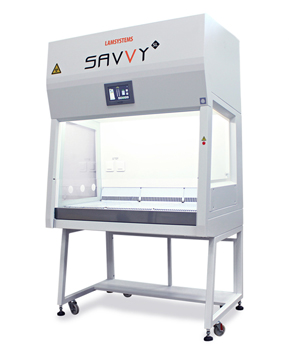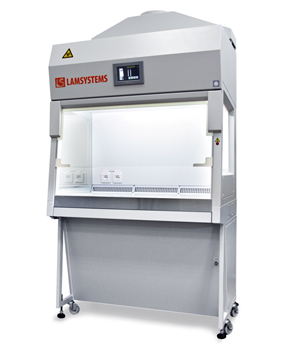Modern biological industrial research is impossible without sterile environments. In the past, large and expensive laboratory spaces with various biological safety level (BSL) measures had to be built to conduct these procedures adequately:
- BSL-1 and BSL-2 labs need to have a room for researchers to change their contaminated laboratory coats.
- BSL-3 labs require an airlock with negative pressure and a HEPA-filtered exhaust system.
- BSL-4 labs require an airlock with a shower, a vacuum room, an UV light room, and other procedures that may vary depending on the research.
The invention of Biological Safety Cabinets has helped immensely in the development of research in chemistry and biology. The prototypes of these devices were conceived in the second half of the 20th century. In a couple of years, industrial production was established to meet the demands of laboratories around the world.
At first, Biological Safety Cabinets were quite expensive pieces of equipment, but today, the market offers these hoods much more cheaply.
Directional airflow is what helps to separate the room and scientists from contaminated samples. Depending on the safety class of these cabinets, researchers can either work with samples directly or through the glove box.
Biological Safety Cabinets Class II

This type of laboratory equipment is used to protect people who work with dangerous samples. It uses HEPA filtration, unidirectional airflow, and powerful fans. Research companies can choose from four types of Class II BSC (A1, A2, B1, B2) to satisfy their laboratory requirements. The following disciplines use a biosafety cabinet in their studies:
- microbiology;
- cell cultivation;
- pharmacology;
Compared to Class I BSC devices, this type offers protection for the sample. It includes an option to place multiple samples inside one hood. Cross-contamination is prevented by the laminar airflow. It also separates the outside environment of the room from the sterile space inside the cabinet.
Biological Safety Cabinets Class II Type B2

HEPA or ULPA filters (depending on the model) allow a biosafety cabinet Cass II Type B2 to exhaust contaminated air without causing any harm to the environment. Air is not recirculated back into the working environment, which makes Type B2 BSC a perfect pick for containing the following materials:
- gasses;
- volatile chemicals;
- contagious cell cultures.
These materials require high volumes of exhaust due to the number of particles they emit constantly. It is not possible to deal with them without an external exhaust. The installation of the duct system is required for Class II Type B2 biological safety cabinets. It is important to check the filters’ integrity regularly to prevent contaminated particles from escaping.
Biological Safety Cabinets Class III

Class III is the highest class of protection offered by these devices. It protects researchers working with dangerous materials, the dangerous materials themselves from cross-contamination, and the outside environment. An example of such hazardous substances may be risk group 4 microorganisms. They can cause serious diseases for any human who comes in contact with them.
A Class III biosafety cabinet has a sealed enclosure with tempered glass windows and a glove box to work with samples. In addition to multiple HEPA filters along the path of the contaminated air, the exhaust system may have an incineration chamber where all the dangerous particles are destroyed. Scientists use an airlock to transfer samples in and out.